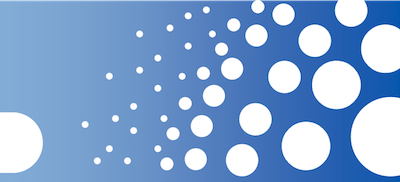
 |
Website
creation:
M. Perego
R. Colnaghi |
About
The objective of the project is the growth and manipulation of
semiconducting (silicon) and metallic (gold) nano-objects (nanodots,
nanowires) in/on an oxide matrix in order to fabricate devices in which
the different fabric elements will be interfaced to create a new
generation of nano-transistors, nano-memories and nano-emitters. The
placement of these nano-objects will be controlled by
templated-self-assembly, i.e. the combination of conventional
lithography and self assembled block copolymers (BC). By combining
“bottom up” self assembled BC thin films with "top-down" patterned
templates it is possible to precisely control the positioning of
nanodot and nanowire arrays and even of single nanodot or nanowire
in well defined locations. This will provide a unique
opportunity to study the interfacing of these nano-objects and to
achieve their electrical and optical coupling both at nanoscale level
(individual behaviour) and on large assembly of nano-components
(macroscopic behaviour)
Background
Nanodots and nanowires are the building block of the next generation of
electronic and photonic nano-devices. The ability to synthesize and
manipulate these objects on large areas is a key issue to really start
the so-called nanotechnology revolution i.e. the fabrication of
nanoscale devices with new and unpredictable functionalities.
Block-copolymers are considered an extremely promising tool in order to
overcome the size scale limitations of conventional photolithography
techniques. Under suitable conditions block copolymers microphase
separate between incompatible blocks and self assemble into different
periodic nanostructures with periods between 10 and 100 nm. In the form
of thin films with thickness close to the block copolymer repetition
length the domains order with respect to each other and the surfaces.
After selectively removing one of the two components, these thin films,
can be used as soft mask for nanolithographic processes. Using advanced
etching or deposition techniques, it is possible to define, on the
underlying substrate, sub-lithographic periodic features at high
density over wafer-scale areas in a way that is low cost and fully
compatible with the semiconductor microelectronics facilities 6 . In
particular cylindrical and lamellar phase diblock copolymer are among
the most interesting candidates for dot and wire arrays fabrication as
they form periodic and uniform nanostructures on a 2-dimensional
surface. Arrays of metallic and semiconducting nanodots and nanowires
have been fabricated using this approach and opportunities clearly exit
for a very large variety of material choices. With no technology
solutions currently available to meet the requirements of the ITRS
roadmap for manufacturing devices with feature sizes of 15 nm in 2016
(termed the 22-nm technology node) polymer self-assembly has emerged as
a legitimate patterning option for microelectronic industries. The
self-assembly on the scale of phase segregation of block-polymer thin
films has been largely investigated during the last 10 years and has
become a mature field in polymer science. Nevertheless, in the
fabrication of microelectronic and optoelectronic devices, a simple
periodic structure is not sufficient and the organization of
nanostructures into precise locations, which are not periodic, is
required. The spatial control of functional nanostructures using
block-copolymers can be achieved by either topographically or
chemically patterned substrates that deliver an external guidance for
the ordering of block copolymer domains with alignment to surface
patterns. By combining “bottom up” self assembly of block copolymers
with “top-down” patterned templates it is possible to register the
periodic domains of the self assembled block-copolymer film with the
underlying topographic structure and to improve the long range order of
the nanostructures, at the same time reducing defects formation and
increasing size uniformity. Surprisingly, despite the wide consensus on
the potentialities and remarkable flexibility of block-copolymer based
lithography, the possibility to use it in order to interface
nano-objects and fabricate nano-devices is largely unexplored. Very few
data are available in the literature on the electrical and optical
properties of the nanostructures fabricated by means of block
copolymer, most of the reports being focused on the synthesis and
morphological optimization of the nano-objects. One of the main
challenging issues in this field is clearly related to the
implementation of suitable protocols for the combination of these new
nano-lithographic tools with standard semiconductor processing
techniques, conventionally used for the fabrication of electronic and
optolectronic devices. At this point the definition of protocols for
the fabrication of functional nano-devices is crucial to definitely
assess the potentialities of the block-copolymers in this field and to
provide new instruments for the investigation of the unique
size-dependent properties (electronic, optical, and structural) of
these nano-objects.



